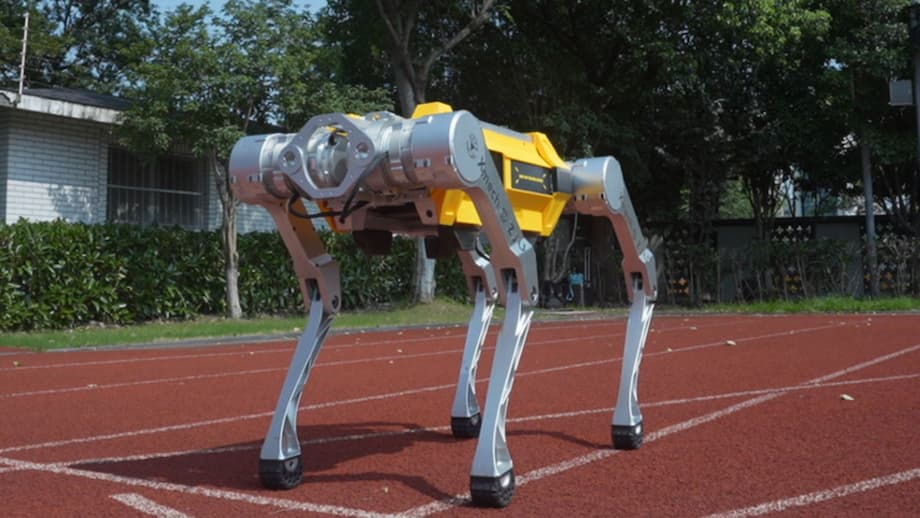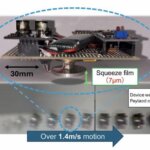China’s White Rhino Robot Dog Shatters 100-Meter Sprint World Record
In a landmark achievement for robotics, a four-legged robot named White Rhino has sprinted its way into the record books. Developed by a team at Zhejiang University in eastern China, White Rhino completed a 100-meter dash in just 16.33 seconds, smashing the previous quadruped robot record of 19.87 seconds held by South Korea’s Hound. The feat, officially recognized by Guinness World Records, not only highlights China’s growing prowess in robotics but also signals a new era in the speed and utility of legged machines.
- China’s White Rhino Robot Dog Shatters 100-Meter Sprint World Record
- How Did White Rhino Achieve This Record?
- Why Is This Record Significant?
- What Makes White Rhino Different from Other Robot Dogs?
- The Technology Behind the Speed
- What’s Next for White Rhino and Quadruped Robotics?
- China’s Growing Role in Global Robotics
- In Summary
While still trailing behind the human world record of 9.58 seconds set by Usain Bolt in 2009, White Rhino’s performance narrows the gap between animal, human, and machine sprinting capabilities. The achievement is more than a headline-grabbing statistic—it’s a showcase of advanced engineering, artificial intelligence, and the future potential of robots in real-world scenarios.
How Did White Rhino Achieve This Record?
White Rhino’s record-setting run took place at a test site in Hangzhou, Zhejiang Province, on May 27, 2025. The robot was developed by a multidisciplinary team from Zhejiang University’s Center for X-Mechanics, the School of Aeronautics and Astronautics, and the Hangzhou Global Scientific and Technological Innovation Center. The project was led by Professor Wang Hongtao, who emphasized that the 100-meter sprint is not just a test of speed, but also of power, stability, and precise control.
What sets White Rhino apart is its robot forward design methodology. Unlike traditional approaches that tweak existing designs, the team started from scratch, using comprehensive computer simulations to model the dynamics of every joint and actuator. This allowed them to optimize the robot’s geometry, motor specifications, and reduction systems all at once, leading to a globally optimal design.
Engineering a Racing-Grade Robot
The hardware at the heart of White Rhino is a set of high-power-density joint actuators. These components deliver high torque and rapid response, mimicking the explosive muscular power seen in elite athletes. The actuators were custom-built by the Center for X-Mechanics, giving the robot a “racing-grade muscular system.”
On the software side, White Rhino’s movement is controlled by a dynamic strategy learned through reinforcement learning. This branch of artificial intelligence allows the robot to “learn” optimal movement patterns through trial and error in simulation, resulting in real-time coordination of powerful pushes, rapid leg swings, and constant balance corrections. The result is a robot that can sprint at high speeds while maintaining stability and control, even under challenging conditions.
Why Is This Record Significant?
The 100-meter dash is a classic test of speed and athleticism, both for humans and machines. For robots, it’s a benchmark that tests not only raw speed but also the ability to maintain balance, adapt to small disturbances, and execute precise control at high velocities. White Rhino’s performance demonstrates that legged robots are rapidly closing the gap with biological systems in terms of speed and agility.
Professor Wang Hongtao explained the broader implications:
“The 100-meter sprint tests the robot’s explosive power, speed, stability, and precise control. Achieving this record validates our technological direction and opens new possibilities for real-world applications.”
Beyond the numbers, the achievement is a testament to the power of integrated design—where hardware and software are optimized together from the outset. This approach is increasingly seen as essential for pushing the boundaries of what robots can do.
What Makes White Rhino Different from Other Robot Dogs?
Many quadruped robots, such as Boston Dynamics’ Spot or MIT’s Cheetah, have made headlines for their agility and ability to navigate complex environments. However, White Rhino stands out for its combination of speed and strength. The robot can carry a maximum load of 100 kilograms (220 pounds), making it not just a sprinter but also a potential workhorse for demanding tasks.
This dual capability is rare in the field. Most research robots are optimized for either agility or load-carrying, but not both. White Rhino’s design allows it to perform high-speed runs while also handling heavy payloads, a combination that could prove invaluable in real-world scenarios.
Potential Applications: From Disaster Zones to Industry
The Zhejiang University team envisions White Rhino being deployed in a range of challenging environments. Potential applications include:
- Search and Rescue: Rapidly reaching disaster victims in areas inaccessible to wheeled vehicles.
- Logistics: Carrying supplies, tools, or sensors across rough or hazardous terrain.
- Military and Security: Transporting equipment or conducting reconnaissance in dangerous zones.
- Industrial Automation: Performing tasks in environments where speed and stability are critical.
As Professor Wang noted, the goal is to move from “running fast” to “running usefully.” The team is already working on enhancing White Rhino’s autonomy, energy efficiency, and environmental awareness, aiming to transform its record-breaking speed into practical utility.
The Technology Behind the Speed
White Rhino’s success is rooted in several technological breakthroughs:
- Robot Forward Design: A holistic approach that models and optimizes every component from the ground up, rather than making incremental changes to existing designs.
- High-Power-Density Actuators: Custom-built joints that deliver the torque and speed needed for explosive movement, similar to the muscles of a sprinter.
- Reinforcement Learning Control: AI algorithms that enable the robot to learn and refine its movement strategies, resulting in real-time adaptation and stability.
- Multi-Objective Optimization: Simultaneously tuning geometry, motor specs, and reduction systems for the best overall performance.
This integrated approach is what allowed White Rhino to achieve a balance of speed, power, and stability that has eluded many previous designs.
How Does White Rhino Compare to Other Robots and Animals?
While White Rhino’s 16.33-second 100-meter time is still slower than the fastest humans and animals, it represents a dramatic leap forward for legged machines. For context:
- Usain Bolt (human): 9.58 seconds (world record)
- Cheetah (animal): Can reach 100 meters in about 6 seconds
- Previous robot record (Hound, South Korea): 19.87 seconds
White Rhino’s achievement narrows the gap and suggests that, with further advances, robots may one day rival or even surpass their biological counterparts in certain tasks.
What’s Next for White Rhino and Quadruped Robotics?
The Zhejiang University team is not resting on its laurels. Future development will focus on:
- Robustness: Ensuring the robot can operate reliably in unpredictable real-world environments.
- Energy Efficiency: Reducing power consumption to extend operational time and range.
- Autonomous Navigation: Integrating advanced perception systems so the robot can make decisions and navigate complex terrain without human intervention.
These improvements are essential for moving from controlled test environments to practical deployment in disaster zones, industrial sites, and beyond.
Expert Perspectives: The Broader Impact
The robotics community has taken note of White Rhino’s achievement. According to Cheng Shaowen, a member of the development team,
“Most notably, its maximum load is 100 kilograms, making it a quadruped robot capable of both high-speed running and heavy-load performance.”
Industry observers point out that such breakthroughs could accelerate the adoption of legged robots in sectors where speed, agility, and payload capacity are critical. As robots become more capable, they could take on roles ranging from emergency response to infrastructure inspection and beyond.
China’s Growing Role in Global Robotics
White Rhino’s record is also a reflection of China’s increasing investment and expertise in robotics and artificial intelligence. The country has made robotics a strategic priority, with universities and research centers pushing the boundaries of what machines can achieve. This latest achievement puts China at the forefront of quadruped robotics, challenging established players in the US, South Korea, and elsewhere.
As the field continues to evolve, international competition and collaboration are likely to drive even more rapid advances, benefiting industries and society as a whole.
In Summary
- China’s White Rhino robot set a new Guinness World Record for the fastest 100-meter sprint by a quadruped robot, clocking 16.33 seconds.
- The robot was developed by Zhejiang University using a forward design approach, optimizing hardware and software together from the ground up.
- White Rhino combines high-speed running with the ability to carry heavy loads (up to 100 kg), making it unique among quadruped robots.
- The achievement demonstrates significant advances in actuators, AI-based control, and integrated design in robotics.
- Potential applications include disaster rescue, logistics, and industrial automation, with future work focusing on autonomy and energy efficiency.
- The record highlights China’s growing leadership in robotics and signals a new era for legged machines in real-world tasks.












